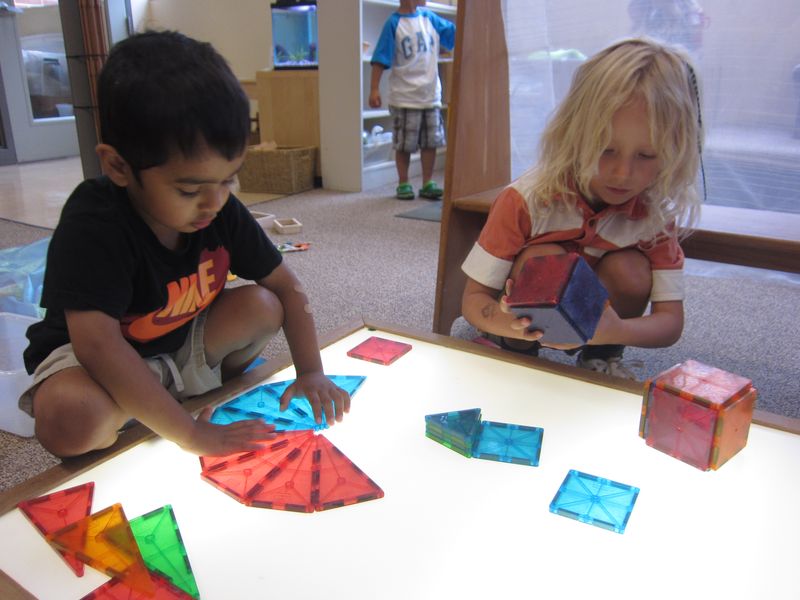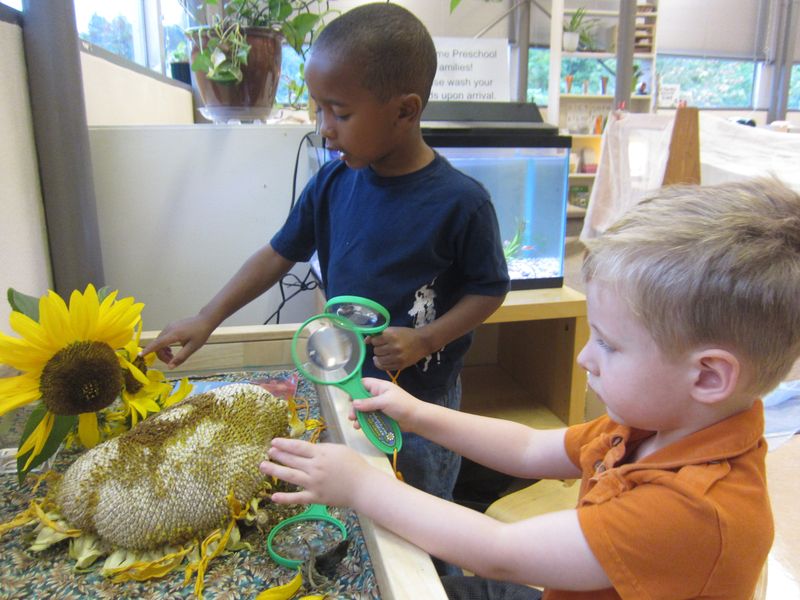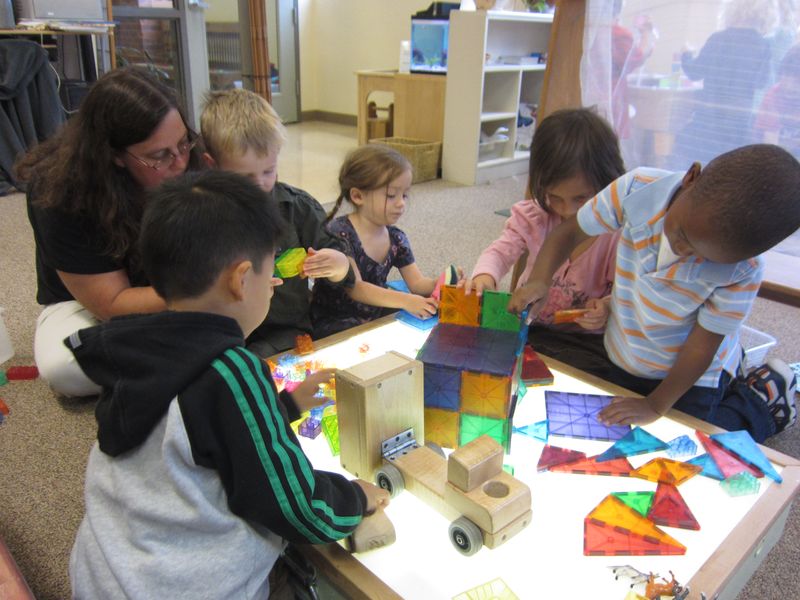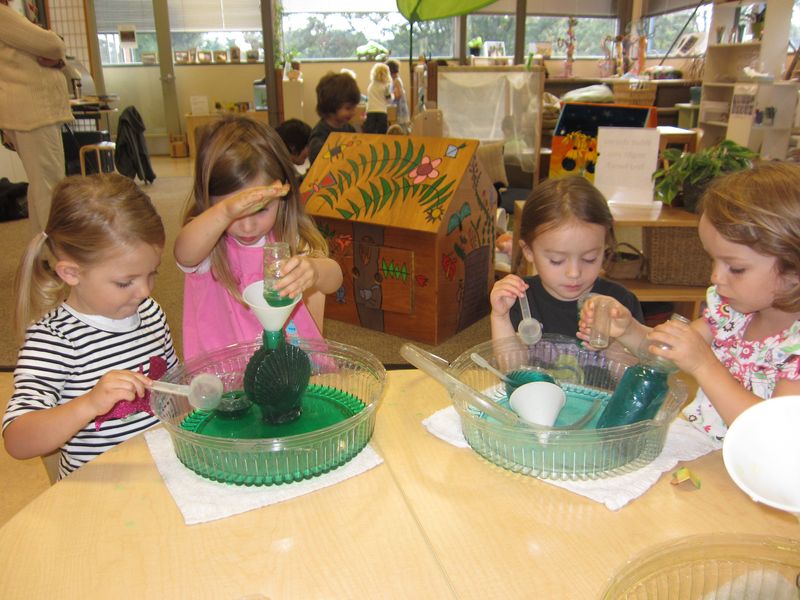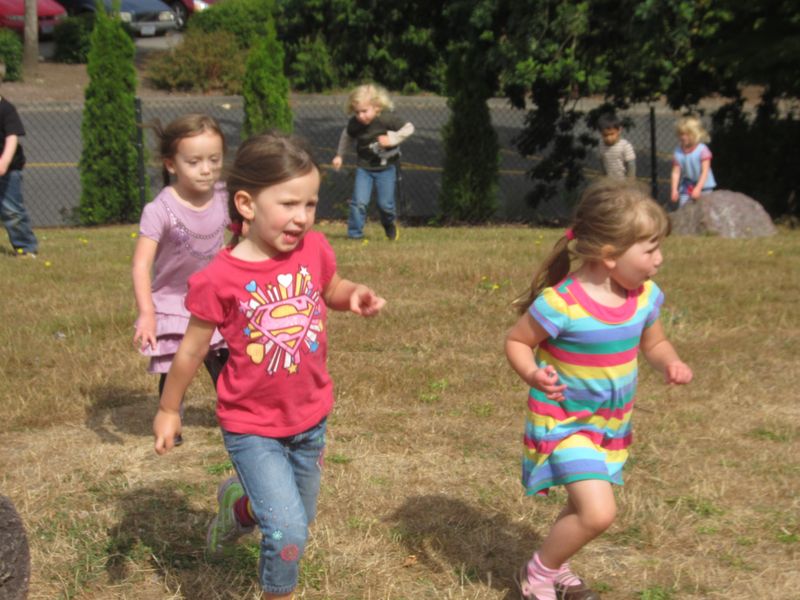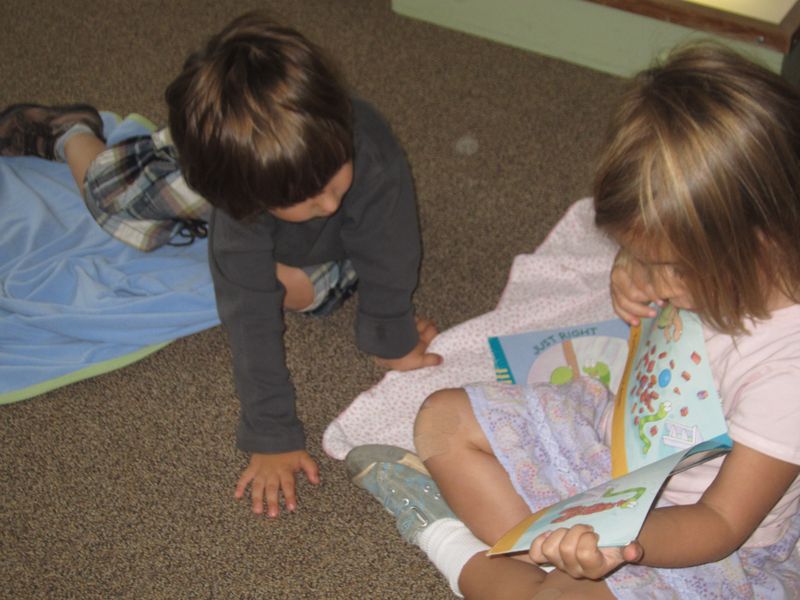Social Conflicts as Learning Opportunities
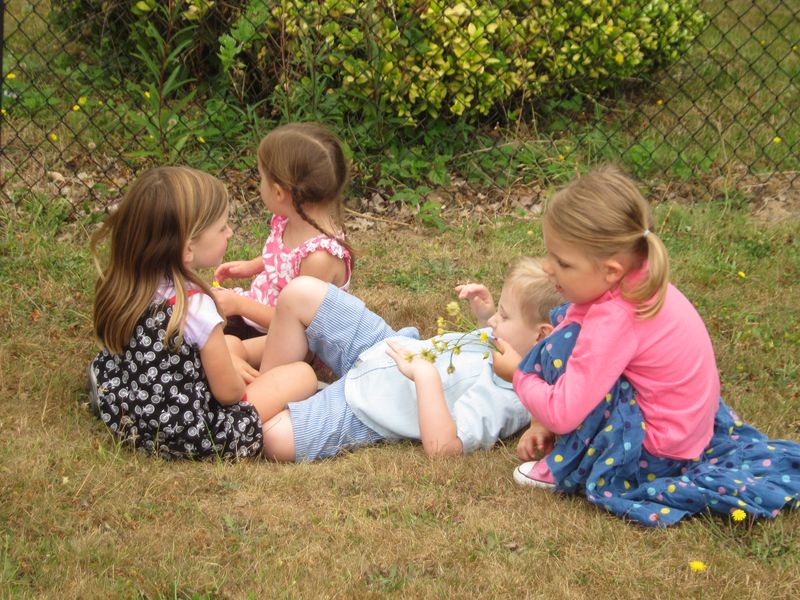
There are many stories to celebrate and share with you from this week. Stories of the children continuing to play and connect with one another, sharing their stories and ideas, and learning more about one another. These interactions are vital in supporting the children’s growing understanding of what it looks like, sounds like and feels like to be a part of a strong, caring learning community. We continually celebrate together and reflect back to the children these interactions as a way to make visible all that they already know and understand about how they want to be together as a community.
However, as children share space, materials and ideas it is inevitable that there will be misunderstandings and disagreements. At this young age children are making their beginning attempts at trying to communicate what they need and want. As with all human beings, this doesn’t always go as they hoped. As teachers, we anticipate this and see these conflicts as central to their work in learning how to connect to one another. Although there have not been many conflicts yet in the classroom, we expect that we will see more as the children develop their relationships with one another and feel safe together. We thought it might be helpful to share with you the ways that we support children to feel empowered to resolve any conflicts that come up. We share a multitude of strategies with them that they can use when they are in conflict with someone else. Most often we are there in a support role, either coaching or facilitating the children as they practice using these strategies and finding the language to communicate what they need or want. We have found that when we offer tools and give them the time and opportunity to practice using them, the children always surpass our expectations in their understandings of how to be together in authentic and respectful ways.
We want to zoom in on some of the strategies that we offer to the children to use in times of conflict. This is not a complete list of the strategies, but the ones that seem most relevant for the children now. For now we are informally introducing these strategies to the children on a situational basis. Over the next few weeks, we will more formally introduce the strategies to the whole class in a way that is both playful and engaging and that will also allow them to share stories of times that they have used these strategies, thus reinforcing their incorporation into their daily lives.
Strategy – Ask a question (or multiple questions)
This strategy really helps to uncover any assumptions that are being made, as well as, it helps us to get more information for better understanding. Two examples of this in practice:
Example 1: A child is building in the block area and there are many blocks on the ground near them. Another child comes up and starts building with some of these blocks. The first child asks, “Did you know that I was using those?” The other child says, “Oh, I didn’t know. Are there any more blocks that I can use?”
Example 2: Two children are playing in the sand box. They are filling a big bucket together. When it is just about to the top, one of the children picks up the bucket and pours it out. The other child kicks sand at the first child. The first child asks, “Why are you kicking sand at me?” The other child says, “You ruined our cake.” 1st child: “How?” 2nd child: “It was almost ready for the oven.” 1st child: “I didn’t know that. I thought we were gonna start over.”
In these examples, the children are asking the questions independently. Often, a teacher will need to encourage a child to ask a question as a way to start to uncover intentions and understandings. Asking a question is often the place to begin in social problem-solving.
Strategy – Give a clear message
This strategy helps to communicate ideas, feelings, needs to the other person(s).
Example 3: A child is running away from a group of children who are playing tag. She is laughing and smiling and running, but she is also yelling “STOP!” This is what we refer to as a mixed message. We would stop the child and ask them if they want to play tag or not. We would explain that their message was not clear. We would then help them to give a clear message, such as, “Please stop chasing me. I do not want to play tag.”
Example 4:
A child is waiting in line to wash their hands for lunch. Someone comes up and gets in front of them, to be next in line. A clear message would be: “I was next to wash hands. You can go after me. I don’t like it when you get in front like that.”
Conflict offers meaningful opportunities to uncover assumptions, to practice clear communication, to listen to and understand another’s perspective, to add on to and connect ideas, and to understand one’s own emotions and the emotions of others. These are all important habits of heart and mind that we are nurturing at Opal Museum School.


